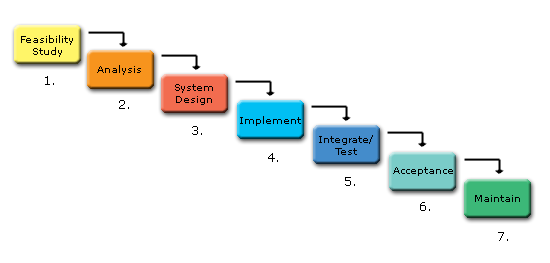Software Development Process

The software development process can be broken down into the following steps:
Step 1
- Required to determine if the project is feasible
- Create high level overview of project, including project requirements and scope
- Define the problem that needs to be solved
- Project planning and scheduling
Step 2
- Understand and document user's requirements for the project
- Expand on project overview and create detailed project definition
- Documents the requirements, scope and business objectives of the project in detail.
Step 3
- This step describes the programs objectives and application design
- Document functional requirements (what the program is supposed to do) and non-functional requirements (system, performance, usability, security requirements, etc.)
Step 4
- Coding phase of the project
- Specifications and functional requirements are translated into programming code
- Create online help and test plans
- Update project plan and schedule
Step 5
- Different pieces or modules of code are combined together, to create the program
- Several testing methodologies are implemented to find any bugs or imperfections that may not have been caught in the previous phases
- Testing ensures that the program complies with all technical specifications as well as user and design requirements
- Create acceptance plan and define test cases
- Design and implementation modifications are made
- Modify and update online help
Step 6
- Software is presented to the user and comments or questions are addressed
- Make necessary changes to project plan and schedule
Step 7
- Any changes after the product has been delivered are considered maintenance.
- Changes can occur due to unexpected input values or changes in the data
- Certain changes at this phase can directly affect how the program operates
© 2001-2014 Personable Inc. All rights reserved. All trademarks and brands are the property of their respective owners. Use of this web site constitutes acceptance of the Personable.com User Agreement and Privacy Policy.
Web Design By Inchol
Web Design By Inchol



